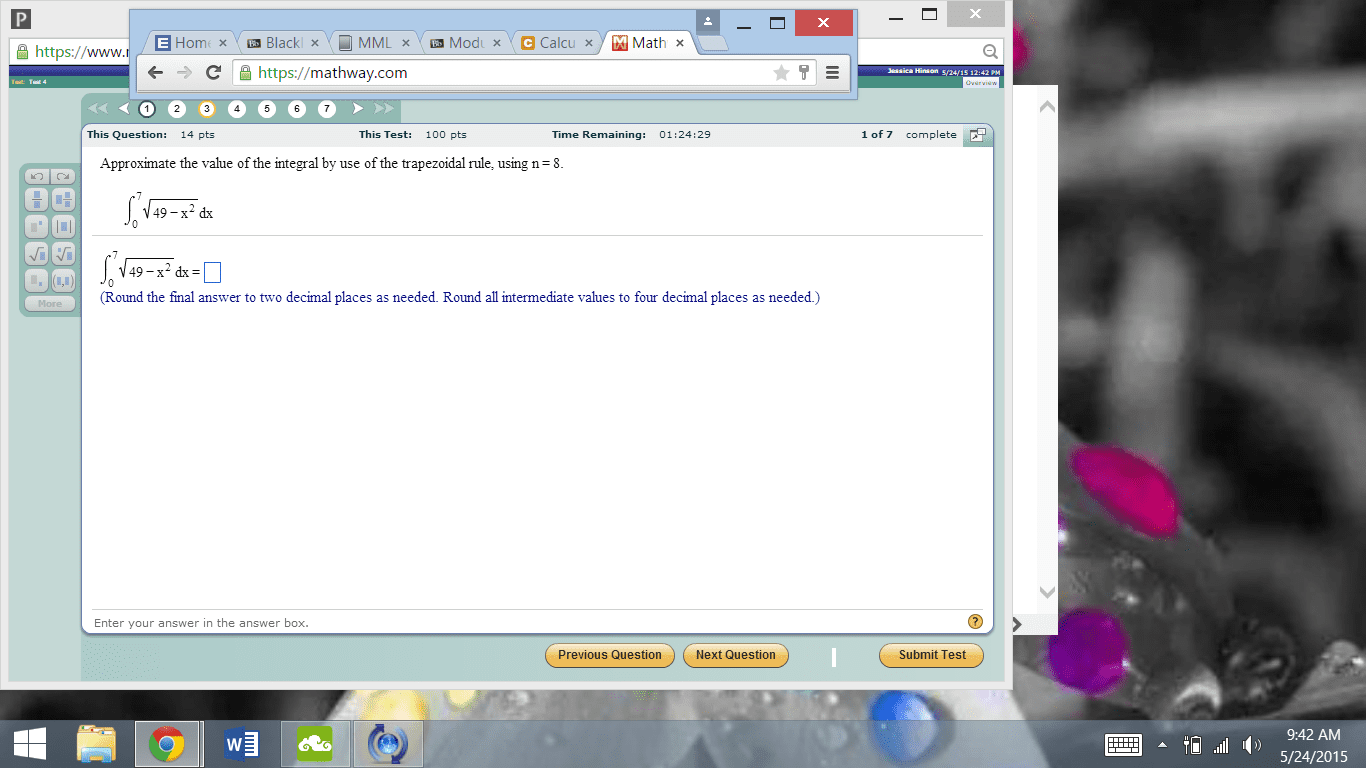draagonfight89
draagonfight89IIMT University
0 Followers
0 Following
0 Helped
1 Mar 2023
Answer: The need for blood pressure machines is clear. High blood pressure is ...
1 Mar 2023
Answer:1. The title of the story is "Compatriots," but the story is about two ...
27 Feb 2023
Answer: Step-by-step explanation:1. A forward market hedging strategy would in...
27 Feb 2023
Answer: Tsar Nicholas II issues the October Manifesto. The Bolsheviks establis...
27 Feb 2023
Answer: Step-by-step explanation:Expected Return 11.0% Risk Premium 3.5% Stand...
27 Feb 2023
Answer:There are a few reasons why investors might prefer floating rate notes ...
27 Feb 2023
Answer: Quesrion 2 The main advantage of the process of mortgage securitizatio...
27 Feb 2023
Answer:The eBay example suggests that the early e-business categories (B2C, C2...
27 Feb 2023
Answer: Step-by-step explanation:1. Bloody Sunday - a massacre of protesters 2...
27 Feb 2023
Answer: Step-by-step explanation Question 1 Answer:: There are three levels of...
27 Feb 2023
Answer: Step-by-step explanation:There are several reasons why businesses may ...
27 Feb 2023
Answer: Step-by-step explanation:pot 2) You know that x and y vary inversely. ...
27 Feb 2023
Answer:The global city is crucial to the industry because it is a major center...
27 Feb 2023
Answer:(-3,15),(-7,9),(3,3)
27 Feb 2023
Answer:a little bit of the philosophy of Python. We'll be looking at the data ...
27 Feb 2023
Answer: In order to compete in the global market, a company would need to be p...
27 Feb 2023
Answer:be hit by anywhere from 2 to 6 hurricanes in a given year is (Round to ...
27 Feb 2023
Answer: Step-by-step explanation:To calculate this by hand, you would need to ...
27 Feb 2023
Answer: Step-by-step explanation:P(X =a,y=6,Z=0) = (1-p)6p0qn-a P(X =a,y=6,Z=1...
27 Feb 2023
Answer: Step-by-step explanation:2asin2 0 2a The following expressions can be ...
26 Feb 2023
Answer: iuld you expect to be gray, long-tailed, and pink-nosed? You would exp...
26 Feb 2023
Answer:There are a total of 900 F1 generation birds. Now look at the phenotype...
26 Feb 2023
Answer:dy/dx = 4cos x/(1+sin x)^2
26 Feb 2023
Answer: Step-by-step explanation:ace of 10 ohms. What is the current in each l...
26 Feb 2023
Answer: Step-by-step explanation:The given definite integral is C6xdx. This ca...
26 Feb 2023
Answer: Step-by-step explanation:alle g number in a variable of a larger type,...
26 Feb 2023
Answer: 0.8581
26 Feb 2023
Answer: No
26 Feb 2023
Answer:I think the best features of capitalism and socialism would be a combin...
26 Feb 2023
Answer: Step-by-step explanation:This assertion is saying that social surplus ...
26 Feb 2023
Answer:= 49x(7x-3)
26 Feb 2023
Answer:x=1 Step-by-step explanation:3x-x+5-2=5 2x+3=5 2x=5-3 2x=2 X=2/2 X=1
26 Feb 2023
Answer:2, The voltage across load 1 ------- 1. The voltage across load 2 is 1....
26 Feb 2023
Answer:1, 33 2, 16.5 3, 11 4, 8.5 6, 5.5 9, 3.5
26 Feb 2023
Answer:SQL is a standard database query language. It is used to query and mani...



